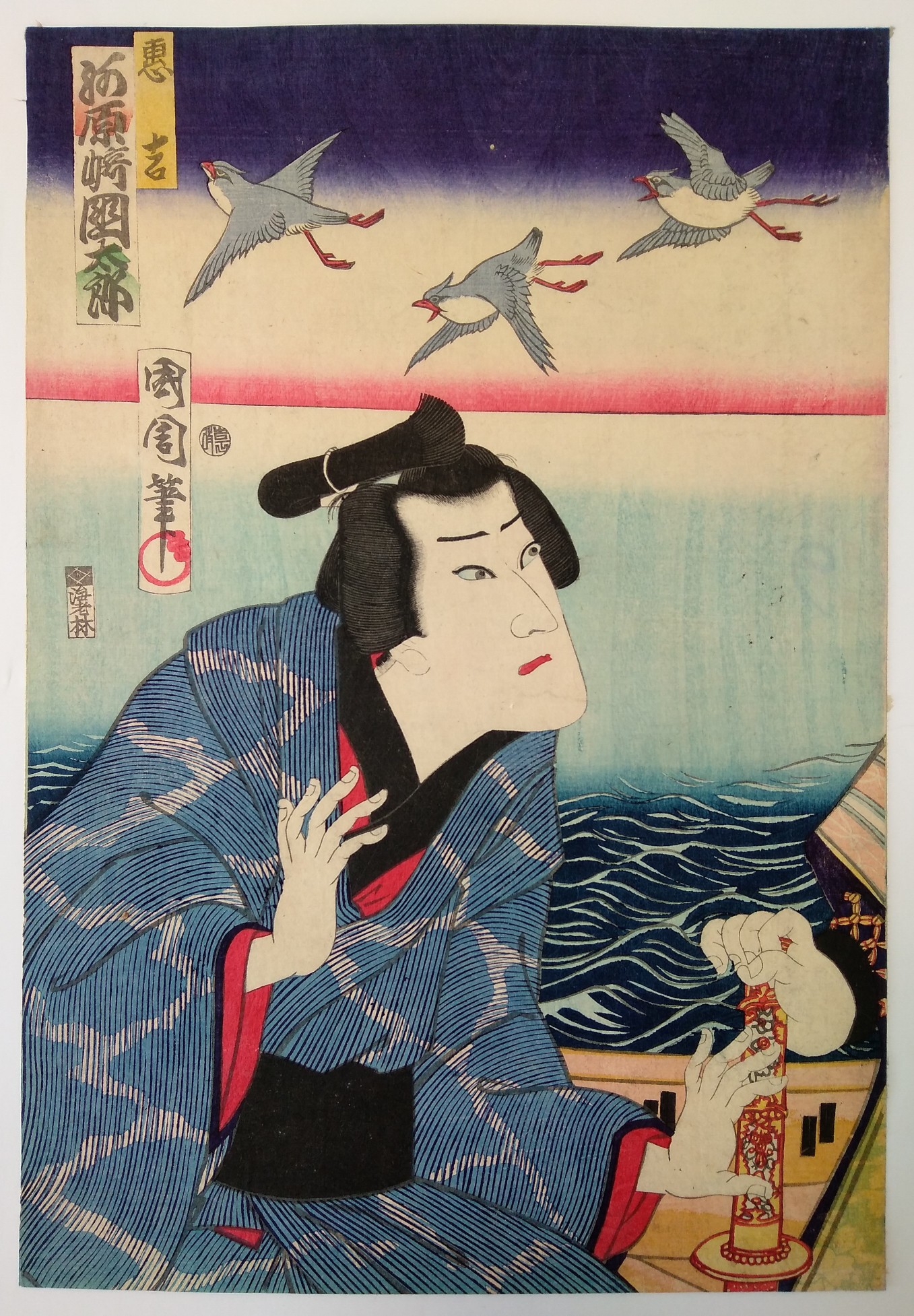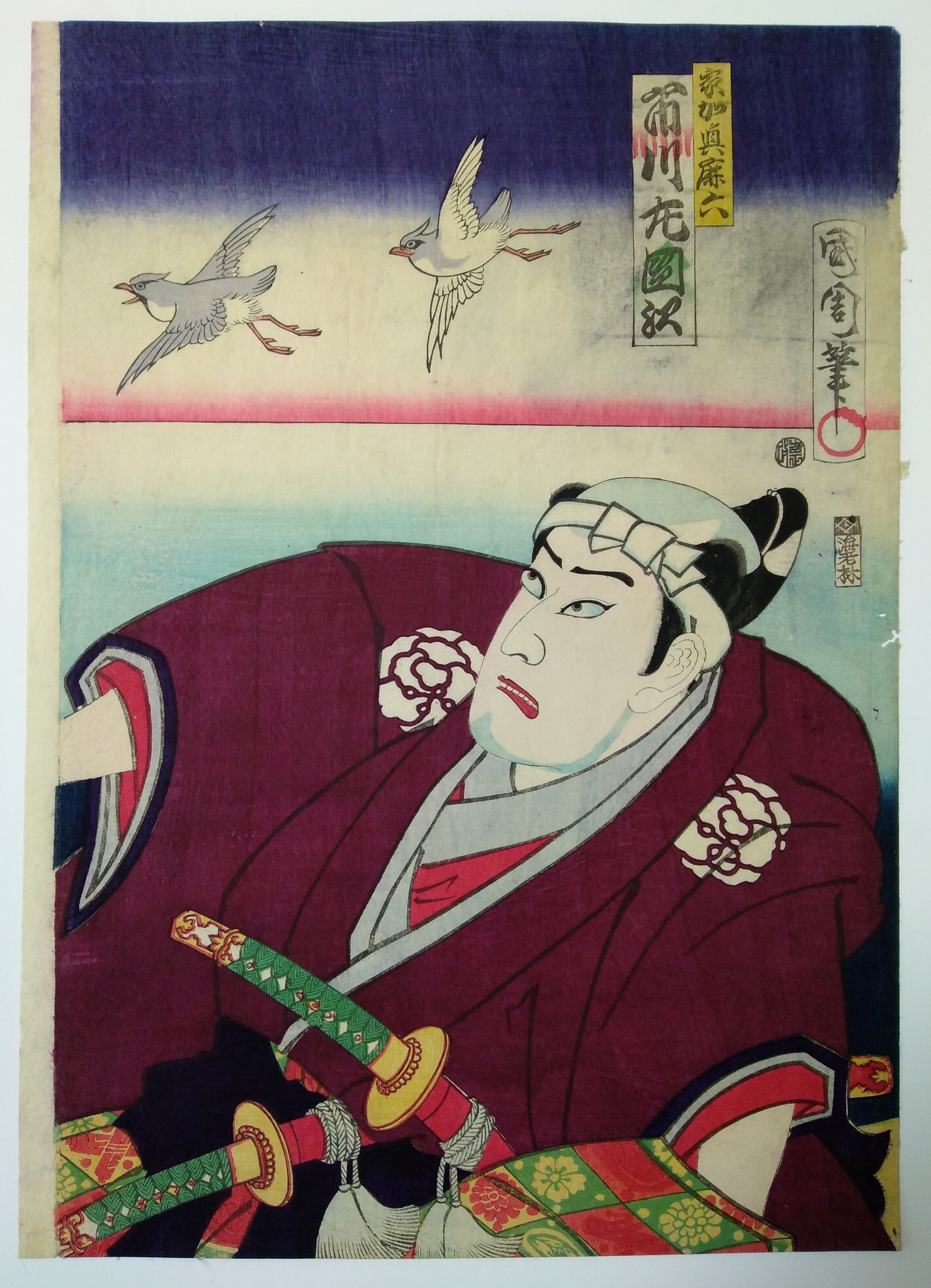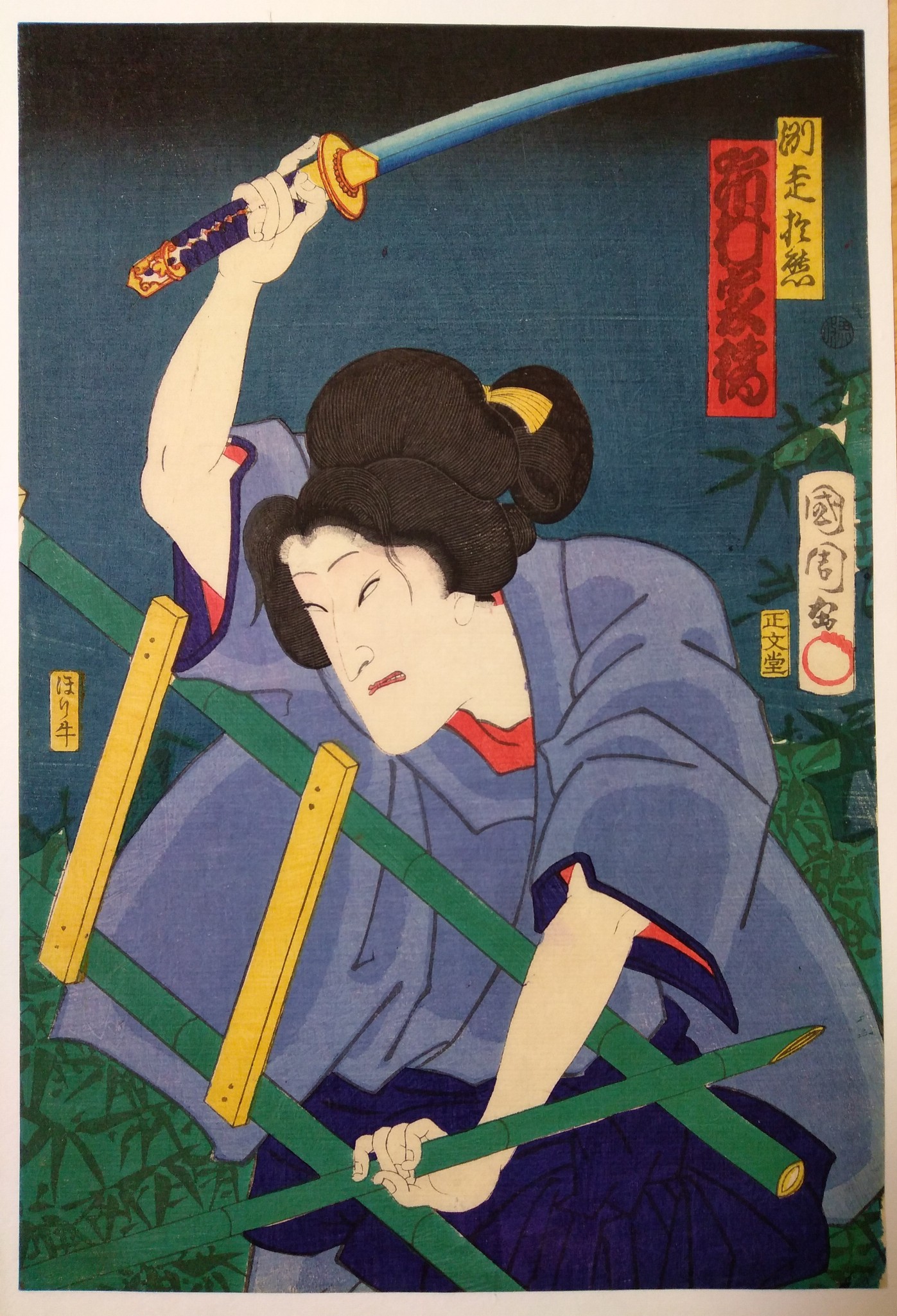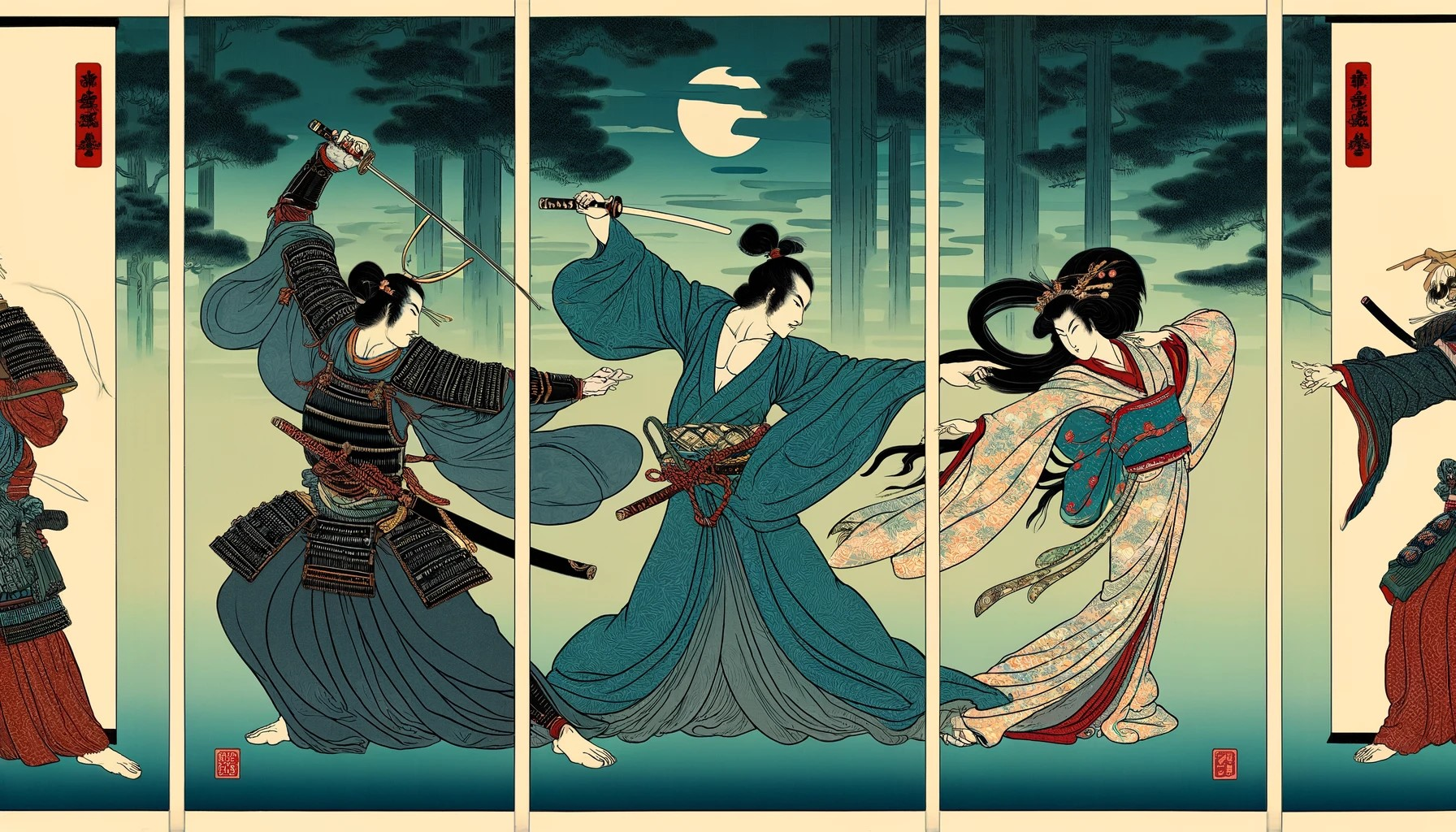Toyohara Kunichika (1835 ~ 1900)
Toyohara Kunichika (豊原国周), born Yasohachi Oshima in 1835, was one of the last great masters of ukiyo-e and one of the most important
woodblock print artists of the Meiji period (1868-1912). He began his artistic journey studying with the ukiyo-e artist Chikanobu Ichiosai
Toyohara (豊原周信), from whom he inherited the artistic name Toyohara. At the age of thirteen, he moved to study in Tōkyō under the guidance
of Utagawa Kunisada, although he never used the Utagawa name despite working in the style of the Utagawa school.
Kunichika is remembered for bringing ukiyo-e into a new era of color printmaking, specializing in dramatic actor portraits (yakusha-e, 役者絵)
and using vivid colors such as intense reds and dark purples, which were made from aniline dyes imported from Germany during the Meiji period.
These bold colors set him apart, as most artists of the time used softer hues.
A passionate fan of kabuki theater, Kunichika spent much time backstage, sketching actors and socializing with theatrical figures, an experience
that enriched his designs with a unique intimacy and emotional depth. Although he also produced bijin-ga (美人画, pictures of beautiful women),
historical prints, and journalistic illustrations, his main passion remained the kabuki theater, from which he drew inspiration for expansive triptychs
and okubi-e (large head portraits) rich in emotion.

Hanakiyo, Kobusho
Thirty-six modern restaurants

Takakura Kazuko
Collection of musical beauties

Kawaosa, Asakusa
Thirty-six modern restaurants

Nuregami Chōgorō
Thirty-six kabuki plays

Chōryō (Zhang Liang)
One hundred roles of Baikō

Ichikawa Yonezō
Okinu the weaver

Ichimura Kakitsu IV
Subashiri Okuma

Onoe Kikujirō II, Ichimura Uzaemon XIV
Asaki en giri no shiragami

Ichimura Kakitsu IV
Subashiri Okuma

Kawaharasaki Kunitarō II
Keikichi

Kawaharasaki Kennosuke VII
Ogata Jiraya

Ichikawa Sadanji
Yaka (or Kaka) Maasa

Ichimura Kakitsu IV
Takechi Jūjirō
Sold out

Ichimura Kakitsu IV
Subashiri Okuma
Sold out


